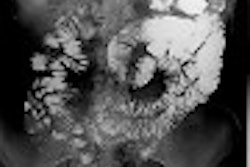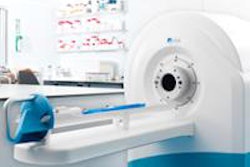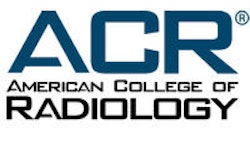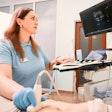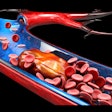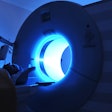Researchers in Ohio and Rhode Island have identified two previously undescribed radiological signs of potentially life-threatening slippage of laparoscopically adjustable gastric bands.
That's according to a new case-controlled study by lead author Dr. David Swenson, from Brown University's Alpert Medical School, and colleagues. Results were published in the July issue of the American Journal of Roentgeonology (Vol. 203:1, pp. 10-16).
Previous research has suggested that a slipped gastric band is likely to have an abnormal vertical or horizontal orientation relative to the midsagittal plane through thoracic spine, or the band's central lumen is more likely to be visualized than its superimposed sides, the team wrote. These two signs are the phi angle and O sign and are found through barium studies.
Now radiologists have two more signs, according to Swenson and colleagues. These are the inferior displacement of the superolateral band margin by more than 2.4 cm from the diaphragm and the presence of an air-fluid level above the band on a frontal radiograph.
"We offer two previously undescribed radiographic signs of gastric band slippage that were sensitive and specific in our patient cohort and can be easily identified on upright frontal radiographs during barium swallow evaluation," the researchers concluded.




